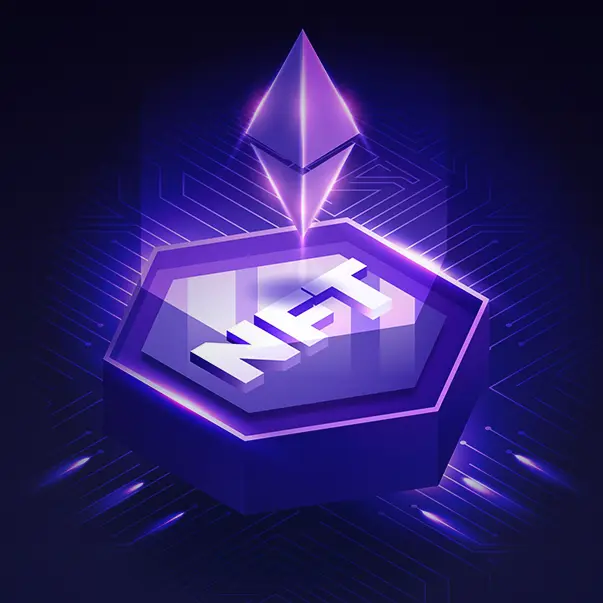How to build crawlable, fast, and trustworthy Web3 experiences that rank
The crypto ecosystem moves fast, but Google’s bots don’t care how cutting‑edge your protocol is if they can’t crawl, render, and understand your site. That’s where technical SEO becomes mission‑critical—especially for multi‑chain blockchain projects juggling EVM and non‑EVM networks, dynamic dashboards, token pages, bridge docs, and ever‑evolving roadmap hubs. If users can’t find your network pages, validator guides, or liquidity tutorials via search, you’re silently losing market share to competitors with cleaner architecture and better indexability.
Technical SEO isn’t just a checkbox; it’s the backbone that lets your content, community updates, and documentation surface when it matters. While a cryptocurrency seo agency can help you craft content and optimize funnels, your organic visibility still hinges on well‑structured markup, lightning‑fast performance, crawlability across chain‑specific sections, and canonical clarity for mirrored docs. It’s no surprise many founders shortlist the best crypto seo agencies or research the top crypto seo agencies when growth stalls—yet even the best partners can’t outrank broken sitemaps, orphaned token pages, or parameter soup.
This guide breaks down the technical pillars that matter for multi‑chain blockchain sites. We’ll cover how to scale URL strategy across networks, avoid duplication as you syndicate docs, align sitemaps with on‑chain reality, and implement performance patterns that survive Web3 dashboards. Whether you work with a specialized cryptocurrency seo agency or optimize in‑house, these tactics will help you ship search‑ready infrastructure without sacrificing dev velocity.
Architecting URLs for Multi-Chain Scalability Without Cannibalization
Multi‑chain sites often fragment content across versions (mainnet/testnet), networks (Ethereum, Solana, Cosmos), and features (staking, bridging, explorer views). Poorly planned URL patterns create cannibalization: multiple pages targeting the same intent, making Google guess which should rank. A scalable approach:
- Choose a consistent hierarchy: /network/feature/ (e.g., /ethereum/staking/ or /polygon/bridge/). Avoid redundant layers like /chain/ethereum/network/mainnet/ unless they’re necessary for enterprise docs. Use short, descriptive slugs—“/validators/” beats “/node-operator-resources/overview/01/”. Separate environments: /testnet/ should be noindexed or isolated behind auth if it’s not meant to rank.
Map intents to templates: protocol overview, tokenomics, validator setup, liquidity incentives, bridge guides, wallet support, and ecosystem grants. Give each template a unique purpose and primary keyword. Internal link modules (“Related on-chain guides” by network) help distribute authority. When partnering with the best crypto seo agencies, demand an information architecture audit that includes intent mapping per chain, not just a generic sitemap cleanup. This prevents the common fate where Solana staking content competes with Ethereum staking content—both diluted, neither winning.
Rendering Web3 Interfaces: SSR, Hydration, and Bot-Friendly Data
DeFi dashboards, NFT galleries, and analytics pages often rely on client-side rendering. Search bots may struggle to see key content if it loads after hydration or requires wallet connection. To surface indexable value:
- Prefer server-side rendering or static generation for hero content, headings, and primary copy. Defer noncritical widgets (charts, balances) to client-side scripts after initial render. Precompute metadata: titles, descriptions, JSON-LD, and Open Graph tags should not depend on wallet state. Use isomorphic fetch with retries and fallbacks to avoid blank states when third-party APIs rate-limit.
If you must render dynamically, provide an HTML snapshot or adopt a serverless renderer. Ensure pagination is crawlable: traditional anchor links outperform infinite scroll for bots. A cryptocurrency seo agency with Web3 experience will sanity-check your rendering pipeline in Lighthouse and the Mobile-Friendly Test, then compare raw HTML to rendered DOM. The goal is simple: if bots viewed only the initial HTML, they’d still understand your page’s core topic and intent.
Entity-First Schema: Connecting Protocols, Tokens, and Networks
Blockchain sites are rich with entities—protocols, tokens, chains, bridges, and validators. Schema.org markup clarifies these relationships, improving eligibility for rich results and disambiguation in Knowledge Graphs. Practical steps:
- Use Organization and WebSite on global templates, and Product or SoftwareApplication for dApps and wallets. Mark up token pages with additionalProperties for contract addresses (by chain), total supply notes, and links to explorers. For documentation, use TechArticle with codeSampleType and version fields; add BreadcrumbList sitewide. Connect entities via sameAs to explorers, GitHub repos, whitepapers, and audited reports.
Create a “Network Directory” hub that lists each chain with structured data and canonical links to their respective feature pages (staking, bridge, fees). Clarify token tickers that overlap across ecosystems using schema properties and on-page copy. When evaluating the top crypto seo agencies, check their schema playbooks—look for entity mapping examples that reflect multi‑chain complexity, not just generic Organization markup. Proper entity strategy helps Google distinguish your bridge docs from third-party tutorials and reinforces topical authority across chains.
Canonicals, Parameters, and Duplicates in Cross-Chain Docs
Docs frequently fork across versions, languages, and networks, creating duplicate or near‑duplicate content. Without strict canonical and hreflang discipline, search engines waste crawl budget and split link equity. Implement:
- Self‑referencing canonical tags on primary docs; canonicalize derivatives (print views, tracking parameters) to the main page. Distinct canonicals per network when content differs meaningfully (e.g., “Run a Validator on Cosmos” vs. “Run a Validator on Ethereum”). hreflang for localized docs; ensure reciprocal annotations and consistent language-region codes. Parameter handling policy in Google Search Console; avoid parameters for pagination where possible.
Use a “version switcher” that updates URLs, not just content tabs. For tutorials with 80% overlap, add clear network-specific steps and unique FAQs to establish differentiation. Periodically crawl your domain with a headless crawler to identify near-duplicates by similarity score. A seasoned cryptocurrency seo agency will set guardrails in your doc tooling (like Docusaurus or Next.js) to auto‑insert canonical and hreflang tags, reducing human error as teams ship fast.
Performance for Data-Heavy Pages: Core Web Vitals in DeFi Contexts
DeFi and explorer pages tend to be heavy: charts, live pools, NFT grids, and ABI-driven components. To keep Core Web Vitals healthy:
- Prioritize LCP: server-render a meaningful hero element with a compressed image or SVG placeholder; preconnect to critical CDNs and RPC endpoints. Tame CLS: reserve space for widgets, ads, and toasts; lazy-load below-the-fold modules with IntersectionObserver. Improve INP: debounced event handlers, web workers for heavy parsing, and requestAnimationFrame for smooth UI updates. Bundle strategy: split by route and component; cache immutable assets aggressively; use HTTP/3 and brotli.
Instrument Real User Monitoring (RUM) expert top crypto seo agencies segmented by chain pages to capture real performance pain. Optimize node requests by caching summaries server-side; don’t block rendering on on‑chain calls. Agencies on shortlists like the best crypto seo agencies often pair DevRel with performance engineering—because shaving 400ms from LCP on high‑intent pages can move both rankings and conversion.
Sitemaps That Mirror On-Chain Reality
Static sitemaps go stale quickly in Web3. Token listings, governance proposals, and validator guides evolve with each network upgrade. Build a sitemap pipeline that:

- Generates modular sitemaps by content type: /sitemap-networks.xml, /sitemap-docs.xml, /sitemap-governance.xml, /sitemap-learn.xml. Updates lastmod based on content and metadata commits (or on‑chain events reflected in your CMS). Excludes ephemeral states (e.g., closed liquidity campaigns) or moves them to an archive sitemap with noindex. Includes image and video sitemaps for tutorials, AMAs, and walkthroughs.
Validate with Search Console and monitor indexation deltas after hard forks or token contract migrations. When auditing the top crypto seo agencies, ask how they model sitemap logic for tokens across multiple chains and whether they automate lastmod via Git hashes or CMS webhooks. The closer your sitemaps reflect real product state, the faster search engines align rankings with your freshest, most authoritative pages.

Security, Trust Signals, and E‑E‑A‑T for Protocol Credibility
Crypto audiences are skeptical—and so are algorithms. Technical SEO intersects with trust:
- Enforce HSTS, valid SSL, and subresource integrity. Mixed content or expired certs tank trust. Publish security disclosures, audit reports, bug bounty links, and incident timelines. Add author entities with credentials (researchers, core devs) and link to GitHub commits and conference talks. Use structured data for reviews and FAQs only where genuine; avoid manipulative markup.
Surface risk disclaimers on trading or staking pages; link to official docs and explorers. Embed provenance: signed release notes, verified social handles, and consistent branding across subdomains. A cryptocurrency seo agency should propose an E‑E‑A‑T framework tailored to protocols—combining governance transparency with contributor profiles. These signals reduce bounce rates and improve conversions while aligning with search quality rater guidelines.
Tracking Multi-Chain Conversions and SEO Impact
Attribution is tough when conversions happen across chains, wallets, and partner dApps. Measure what matters:
- Define SEO conversions per intent: documentation engagement, validator signup, bridge completion, token page click‑through to exchanges, or governance participation. Implement server-side tagging to reduce ad blockers’ impact; track “soft” conversions like docs completion via scroll depth and copy interactions. Use UTM standards and referral exclusions across subdomains and app domains. Build a Looker or Metabase model mapping organic sessions to on‑chain events (via webhooks or indexers) where privacy and terms allow.
Create dashboards segmented by network, page template, and query cluster. Re‑evaluate keyword targeting quarterly as chain ecosystems shift. When you evaluate partners among the best crypto seo agencies, prioritize those who can model organic influence on on‑chain KPIs rather than vanity traffic.
FAQs: Technical SEO for Multi-Chain Blockchain Sites
Q1: How do I prevent Google from indexing testnet or staging interfaces?
A: Gate staging with auth and IP allowlists. For public testnet docs, add meta robots noindex, disallow in robots.txt, and remove from sitemaps. Ensure noindex pages don’t receive internal links you want to rank.
Q2: Should token pages be consolidated if they exist on multiple chains?
A: Use a canonical “token root” page that summarizes utility and governance, then link to chain-specific subpages with distinct on‑chain details (contract, liquidity venues, fees). Don’t canonicalize all variants to one root if user intent differs per chain.
Q3: What’s the best way to handle community translations of docs?
A: Use a translation workflow that enforces hreflang and quality gates. Add rel=“canonical” to each localized page pointing to itself, not the source language. Credit translators and date the last update so users and bots can gauge freshness.
Q4: Can I rank dynamic dashboards that require a connected wallet?
A: Yes—expose an SEO-friendly, read-only preview with sample data and explanatory copy rendered server-side. Keep wallet‑gated interactions client-side. This gives bots and users enough context to rank and convert without sacrificing security.
Q5: How often should we re‑crawl our site for technical issues?
A: For active protocols, run weekly crawls and deeper monthly audits. Trigger ad‑hoc crawls after network upgrades, contract migrations, or major doc restructures to catch broken links, 404s, or orphaned sections early.
Conclusion
Multi‑chain blockchain sites succeed in search when their technical foundation scales with the protocol: clean URLs by network and intent, bot‑friendly rendering, robust schema for on‑chain entities, airtight canonicals, and performance tuned for data‑heavy interfaces. Layer in sitemaps that reflect live product states, security and provenance signals for trust, and analytics that tie organic traffic to on‑chain outcomes. Whether you build in‑house or partner with a specialized cryptocurrency seo agency, insist on systems that prevent duplication, preserve crawl budget, and prioritize real user speed. That’s how you earn durable rankings—so validators, liquidity providers, and everyday users can actually find what you’ve built. When comparing the best crypto seo agencies or shortlisting the top crypto seo agencies, look for teams that treat technical SEO as product infrastructure, not a quick fix.
SEO for Crypto | USA | 866-989-3458 | SEO For Crypto is a specialized crypto SEO agency helping blockchain companies, DeFi platforms, NFT marketplaces, exchanges, and Web3 startups gain targeted visibility and measurable results. Boost your crypto website's visibility with digital marketing services tailored for the blockchain industry. Our data-driven strategies, advanced SEO techniques, and exclusive focus on crypto ensure your project ranks higher, builds trust, and scales sustainably.